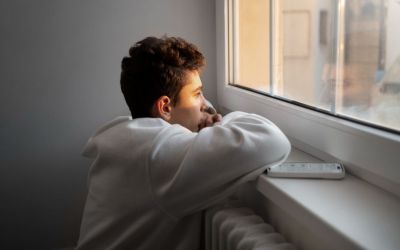
Adolescence, social media and self-esteem
Mir spasët krasotà: beauty will save the world. Mir means ‘peace’ and not only ‘world’ in Russian. More than 150 years ago, and well before the advent of technology and social media, Dostoevsky prophesied that the only way to genuine peace – that could be achieved by both the individual and society – was through caring for and protecting beauty. But which beauty was he talking about? The beauty that comes from the ability to be compassionate, knowing how to marvel, to feel emotions, to accept and be accepted, to believe in one’s own abilities and those of others, to respect oneself and know how to respect. Most recent scientific studies would identify such beauty as consisting of the same elements that are recognized as positive internal resources that are protective factors for mental health, in childhood and beyond (Polce-Lynch et al., 2001; Franchina & Coco, 2018). Beauty that lets us be at peace with ourselves. But is this notion of beauty still applicable today?
There a recent news of a filter, used on a well-known social network, that exploits artificial intelligence to ‘hyper-realistically distort’ – to use an oxymoron – a person’s facial features, making them perfect (according to canons of beauty in line with the latest trends) but still recognizable. And this is coupled with the massive reliance on photo-editing software and traditional filters that young people (and others) already use to feel sufficiently acceptable and to be able to show themselves to the world, especially (and only, for many) on the walls of various social media (Jiang & Ngien, 2020).
All this represents a risk for adolescents because, they are in a phase of self-definition that also involves being recognized by others, and they choose to show themselves through a filter. Thus they manipulate not only the image they present to others but also to themselves, to the point of no longer recognizing themselves, and all this in order to accept themselves and feel accepted (actually, approved rather than accepted) (Chua & Chang, 2016; Hill & Denman, 2016).
The construct of self-esteem is fundamental at all points of our life trajectory, but even more so in adolescence. It is a variable that combines a sense of perceived self-efficacy, acceptance, regulation and expression of emotions, change management, and knowledge of one’s own resources and limits. It defines the possibility of determining our future based on our self-confidence. Thus, it is not surprising that self-esteem (or rather, lack thereof) is also one of the recognized diagnostic criteria for mood disorders – such as depression, dysthymia, etc. – and has been prove to be linked with symptoms of anxiety (Polce-Lynch et al., 2001; Hill & Denman, 2016; Franchina & Coco, 2018).
But what is the connection between body image and body modifications and self-esteem? This variable, unlike others, is also ’embodied’ and is strengthened (or destroyed) by looking at oneself and others, through judgement and through comparison with often unrealistic aesthetic standards.
Recent studies (Veldhuis et al., 2020; Maes & de Lenne, 2022) are attempting a more in-depth analysis of the relationship between self-esteem, self-image on social media and the use of cosmetic surgery as the only acceptable means of working on oneself in order to achieve an ideal – only aesthetic – that can make us feel good about ourselves through the approval of others. This is an unrealistic and potentially dangerous pursuit of an unattainable perfection that reinforces nothing but a false self, the drive for self-objectification and sabotage of authentic and vital inner parts(Jiang & Ngien, 2020; Veldhuis et al., 2020).
What can we, as educators, do? A lot! We can do a lot! This is because self-esteem is a positive internal resource that is only apparently fragile. In reality, it plays a strong moderating role between a structured and accepting sense of self and the stimuli of the outside world: there is a need, through targeted educational and preventive training, to teach young people how to strengthen it by working on their emotions and recognising and enhancing their talents (Polce-Lynch et al., 2001; Martinez-Pecino & Garcia-Gavilán, 2019).
Chua, T. H. H., & Chang, L. (2016). Follow me and like my beautiful selfies: Singapore teenage girls’ engagement in self-presentation and peer comparison on social media. Computers in human behavior, 55, 190-197.
Franchina, V., & Coco, G. L. (2018). The influence of social media use on body image concerns. International Journal of Psychoanalysis and Education, 10(1), 5-14.
Hill, A., & Denman, L. (2016). Adolescent Self Esteem and Instagram: An Examination of Posting Behavior. Concordia Journal of Communication Research, 3(1), 4.
Jiang, S., & Ngien, A. (2020). The effects of Instagram use, social comparison, and self-esteem on social anxiety: A survey study in Singapore. Social Media+ Society, 6(2), 2056305120912488.
Maes, C., & de Lenne, O. (2022). Filters and fillers: Belgian adolescents’ filter use on social media and the acceptance of cosmetic surgery. Journal of Children and Media, 16(4), 587-605.
Martinez-Pecino, R., & Garcia-Gavilán, M. (2019). Likes and problematic Instagram use: the moderating role of self-esteem. Cyberpsychology, Behavior, and Social Networking, 22(6), 412-416.
Polce-Lynch, M., Myers, B. J., Kliewer, W., & Kilmartin, C. (2001). Adolescent self-esteem and gender: Exploring relations to sexual harassment, body image, media influence, and emotional expression. Journal of Youth and Adolescence, 30(2), 225-244.
Veldhuis, J., Alleva, J. M., Bij de Vaate, A. J., Keijer, M., & Konijn, E. A. (2020). Me, my selfie, and I: The relations between selfie behaviors, body image, self-objectification, and self-esteem in young women. Psychology of Popular Media, 9(1), 3.
Be part of the change. Responsibly sharing content is an act of sustainability.
Let's train emotional intelligence: what emotion does this article arouse in you?


